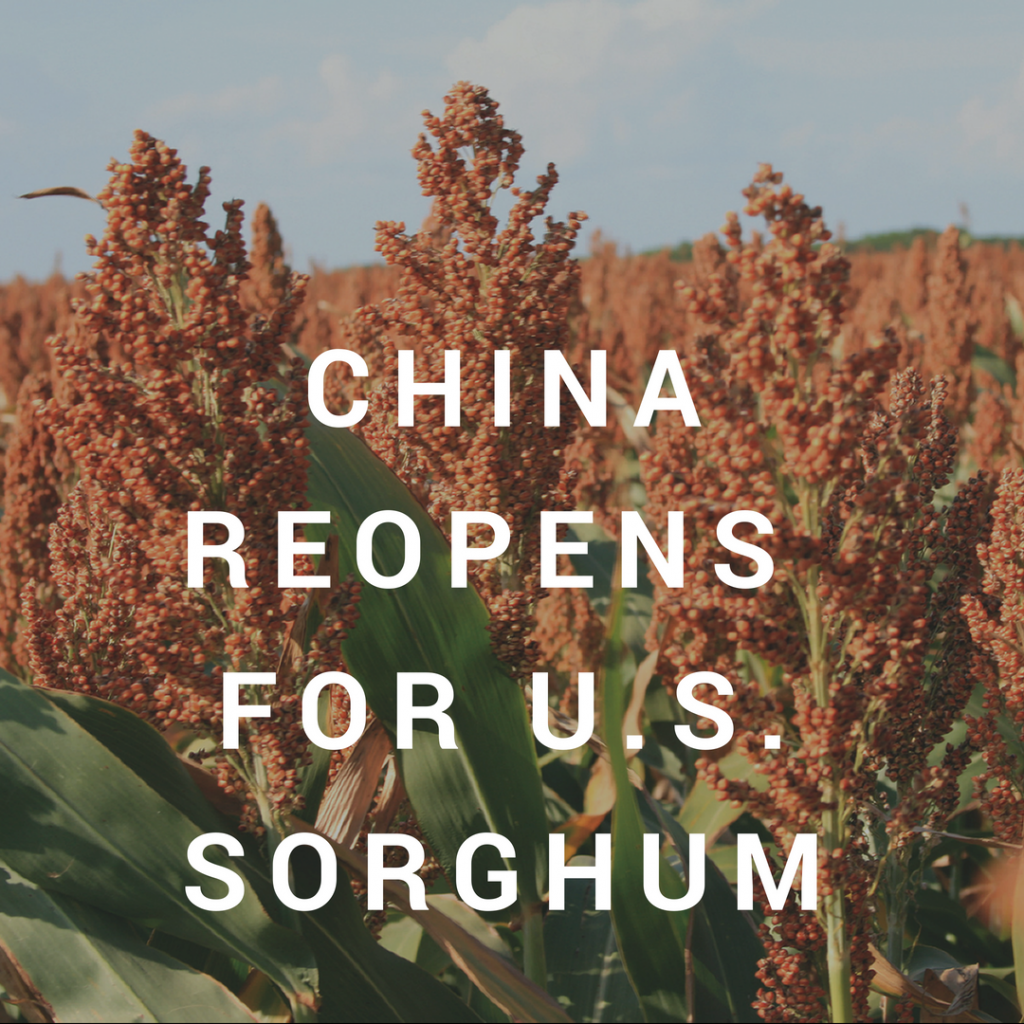In an unexpected sign of goodwill ahead of trade talks with the United States, China announced Friday local time that its Ministry of Commerce had terminated its anti-dumping and countervailing duty cases related to U.S. sorghum and revoked preliminary duties on imports of the grain.
This critical good news for U.S. sorghum producers and exporters – and U.S. agriculture as a whole – has led to increased prices for sorghum farmers nearing harvest and caused at least some shipments of U.S. sorghum on the water to turn back to China.
Still, the episode highlights the risk trade policy poses to the grains marketplace, particularly but not exclusively as it relates to China.
“The re-opening of the sorghum market in China, with removal of the 178.6 percent duties initially imposed, is undoubtedly good for sorghum farmers, and all grain market participants,” said U.S. Grains Council President and CEO Tom Sleight.
The shift in China’s approach to sorghum came following significant efforts by the U.S. sorghum industry to respond to the investigations China brought earlier this year. The Chinese announcement indicated that a review of the evidence in the cases showed the duties would harm the Chinese feed industry and consumers, an argument made by the U.S. sorghum industry in its extensive defense as part of the pending cases.
Urged by the industry and the Council, the White House, U.S. Department of Agriculture and the Office of the U.S. Trade Representative also intervened with the Chinese on sorghum’s behalf. The Council, working with USDA’s Foreign Agricultural Service (FAS), rapidly ramped up marketing programs for U.S. sorghum in countries with the potential for new purchases or purchases of the product for the first time.
A week since the Chinese announcement, there continues to be interest in U.S. sorghum by customers who took another look after the duties announcement stranded up to 20 vessels on the water. The Council’s staff globally is working to ensure the buyers of distressed cargo, including in places like Spain and Saudi Arabia, have the updated nutritional information they need to use it efficiently as well as to capture potential demand in new markets that could become regular buyers.
“We are confident that markets that already know U.S. sorghum, like Japan, Mexico and Morocco, will continue to look at it, while others that haven’t bought it frequently, like Saudi Arabia, countries in South America and more, will look at it now,” Sleight said. “Sorghum has many attributes, and one upside of the issues with China could be that more buyers become aware of the product.”
That diversification is important as there remains an outstanding threat of a 25 percent tariff from China on sorghum, corn and other products, in retaliation for potential U.S. tariffs. U.S. feed grains and their related products also face a plethora of other concerns in China: U.S. corn exports have been challenged by systemic issues with biotech trait approvals; U.S. distiller’s dried grains with solubles (DDGS) face duties from anti-dumping and countervailing duty investigations; and U.S. ethanol is limited by a 45 percent tariff.
The quick application and removal of preliminary duties on sorghum also has caused significant issues for grain traders who had sorghum en route as well as buyers of the grain in China.
“The development from China on U.S. sorghum is a step in the right direction for U.S.-China trade relations, and we hope it is a platform for further lessening of tensions and challenges facing U.S. grains exports to China,” Sleight said.
About The U.S. Grains Council
The U.S. Grains Council develops export markets for U.S. barley, corn, sorghum and related products including distiller’s dried grains with solubles (DDGS) and ethanol. With full-time presence in 28 locations, the Council operates programs in more than 50 countries and the European Union. The Council believes exports are vital to global economic development and to U.S. agriculture’s profitability. Detailed information about the Council and its programs is online at www.grains.org.

